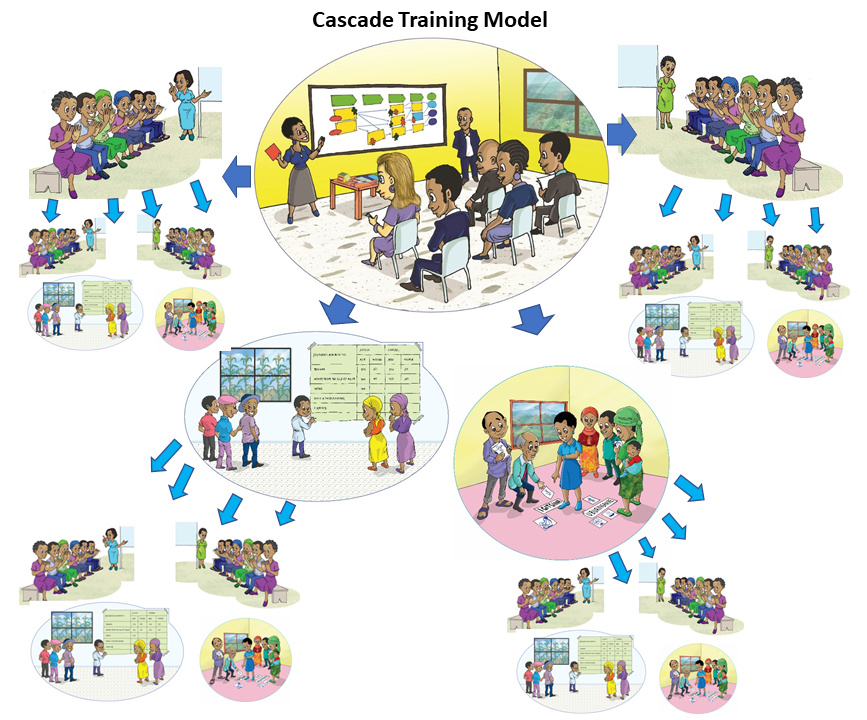E and cascade training
March 16th, 2018
When my wife and I came to Rwanda in March 2015, we thought all of Rwanda would have access to fast internet within three years. We thought e-learning would be as easy for people to pick up as face-to-face courses. We were a bit naïve at the time. Three years have passed and e-learning is still in its infancy here. Nevertheless, it has been born. That is the good news.
From 26th to 28th September, Rwanda will host the annual E-learning Africa conference. This should give a boost to e-learning development in schools and higher learning institutes, which is a huge potential market for us. We could do with some substantial development!
Currently, we are working on e-courses for adults on the subject of Gender in Agriculture. Within this field, cascade training is the common method for training large groups of people. A master trainer teaches a group of trainers, who in turn teach other groups of trainers, who deliver training to target groups in the villages. It is a proven method, but also comes with proven downsides such as high costs and diluted content.
In theory, well-designed e-learning could reach a limitless number of people instantly and render cascade training a superfluous, old-fashioned practice. This is exactly what we have witnessed in developed countries with widespread internet penetration and a broad middle class of people pursuing their own individual development.
In East Africa, including Rwanda, the situation is different. I see four main reasons why cascade training will stay with us in this part of the world for at least another ten years:
1. Low levels of internet penetration and computer literacy in rural areas
Cascade training often targets the poorest parts of the population, people with limited education and not enough money to buy a smartphone or laptop. In rural areas, where these people live, computer literacy is as low as the internet speed, which isn’t set to increase any time soon, mostly due to lack of customers.
2. A culture of passive learning
Traditionally in East Africa, children are trained to listen to teachers telling them what to do. Although Rwanda is battling against this, cascade training fits better with this culture of passive learning than interactive, self-paced learning on a computer.
3. Lack of well-designed localised East African e-learning content
People learn best in their mother tongue, using examples from their own environment. In her inspiring TED talk on the importance of localised content, Chika Ezeanya-Esiobu gives the example of her daughter learning the alphabet starting with ‘A is for Apple.’ Not a very relatable example for an African child. Why change to e-learning unless it includes inspiring, localised content?
4. The area-based approach to development projects
Cascade training fits within the logic of most development projects: build capacity on a specific subject, in a specific geographical area (e.g. selected districts). For many projects, the geographical intervention area is too small to make it worthwhile providing courses in e-learning format, so they stick to cascade training.
Considering these arguments, we have decided, in accordance with our donor, the Swiss Agency for Development and Cooperation, to develop not only interactive e-modules on Gender in Agriculture, but also to develop a repository of downloadable resources for cascade trainers and teachers under a Creative Commons license. As from July of this year, a repository of cartoons, videos, exercises, role-plays, leaflets and infographics will be accessible on our website for everyone to boost the effectiveness of their training. A selection of sample resources are already available. Check them out here. It’s all free!
Jan Willem Eggink

